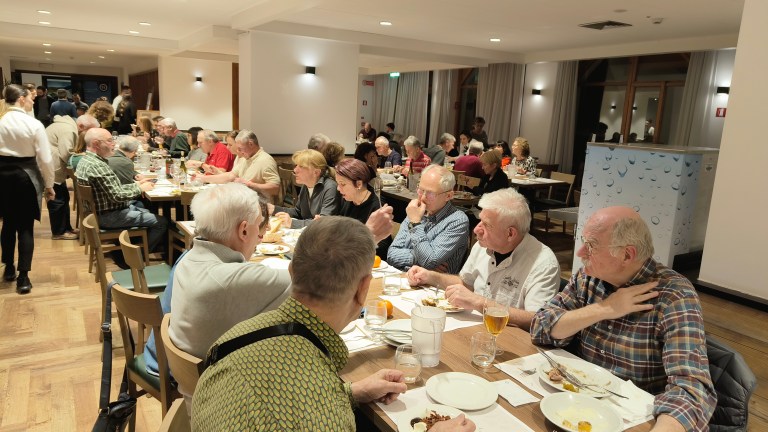Napisala i Przyslala Basia Jaworski

Israeli Opera in Tel Aviv
Didn’t have time to eat before the opera? Don’t worry, at least not if you visit a performance at the Israeli Opera in Tel Aviv. In the huge foyer downstairs there are at least fifty food stands and each floor counts dozens more. You can enjoy everything the good earth (and the cook) has to offer: sushi, sashimi, pasta, pizzas, grilled salmon, sandwiches, salads, fruit, cakes, chocolate ….. As a Jewish proverb says: “They tried to killed us, we survived, let’s eat”.
Surviving at any cost, also (or perhaps mainly?) to be able to avenge your attackers afterwards – that’s what it’s all about, among other things, in Halévy’s La Juive. Especially in David Pountney’s production, which was first performed two years earlier in Zurich.

Jacques Fromental Halevy
Eleazar is not an amiable man. Like Shakespeare’s Shylock, he is repulsive and pitiful at the same time. He is filled with resentment and is looking for retribution for which he is prepared to sacrifice anything, even that which he loves most. But has he always been like that, or are it circumstances that have made him like that? Moreover, he too knows his doubts – in his great aria he sincerely asks himself (and God) whether he has acted well.
Poutney has moved the action to nineteenth century France, at the time of the Dreyfuss affair, and he is very consistent in that. The production is very realistic, with overwhelming scenery and costumes. On stage there is a kind of rotating puppet theatre, with the cathedral, Eleazar’s workshop, Eudoxie’s sleeping quarters, the prison and the street with the mobs of people. If necessary, the scenes are enlarged, allowing more emphasis to be placed on details.

© Yossi Zwecker
Every scene starts behind a transparent curtain, which makes the image blurred like a kind of veil and therefore a bit unreal. After a few minutes the curtain is lifted and the image not only becomes clear, but it also hurts your eyes. Well thought out.
The ballet (choreography Renato Zanella) is an essential part of the story. In a very realistic (and very logical) way a story of persecution and intolerance is told and a link is made between the devil and the Jew. Devil is Jewish, expelling the devil means destroying Jews. It is painful for the Israeli public, after all, they have experienced quite a lot here.
The fact that the premiere took place one day after Yom Hashoa (Holocaust Day) makes it all even more complicated. The emotions are not only tangible but also visible. Let’s say: it is an experience to see the opera right here.
There were no less than 10 performances, they worked with a double cast and for the role of Eleazar even three tenors were engaged.
The premiere on 13 April 2010 was sung by a cast one can only dream of.
Calosc TUTAJ
Kategorie: Muzyka
